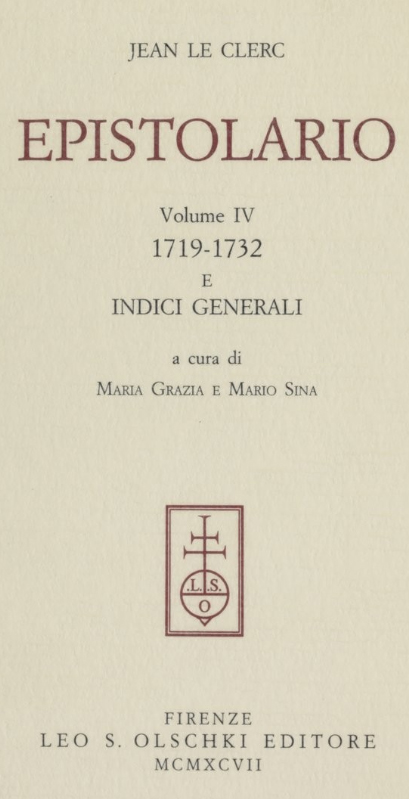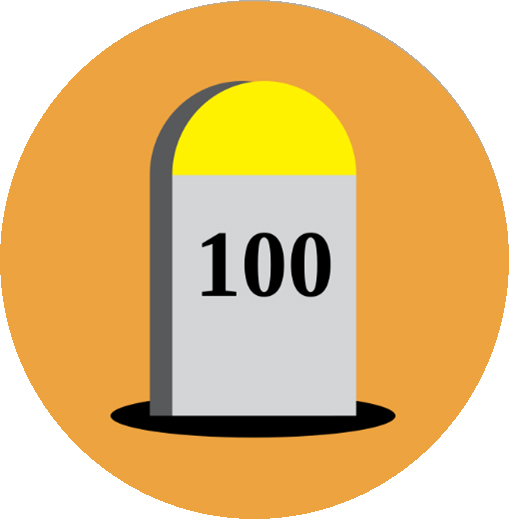 When EMLO launched its ‘new look’ back in January 2015, a re-design that included for the first time catalogue introductory pages, little did anyone foresee that just over three years later the total number of early modern correspondence catalogues within the union catalogue would have burgeoned from an initial sixteen to hit the hundred mark. And we could not be more delighted to be announcing this week that the hundredth catalogue to be published in EMLO is none other than that of the philosopher and theologian Jean Le Clerc.
When EMLO launched its ‘new look’ back in January 2015, a re-design that included for the first time catalogue introductory pages, little did anyone foresee that just over three years later the total number of early modern correspondence catalogues within the union catalogue would have burgeoned from an initial sixteen to hit the hundred mark. And we could not be more delighted to be announcing this week that the hundredth catalogue to be published in EMLO is none other than that of the philosopher and theologian Jean Le Clerc.
 Le Clerc (1657–1736) stands today a towering figure at the heart of the golden age of the république des lettres. As a scholar, he published widely, in particular a number of key critical works, yet perhaps of more significance still he was renowned far and wide during his lifetime for his rigorous and insightful activity as a journalist. Le Clerc’s correspondence has been collected, studied, edited, and published by the scholars Mario Sina and Maria Grazia Zaccone-Sina, and their four exemplary volumes were brought out to great acclaim between 1987 and 1997 by the distinguished Italian publishing house Casa Editrice Leo S. Olschki. The metadata for the 842 letters contained in EMLO’s listing of Le Clerc’s correspondence are taken from this edition, and the EMLO team could not be more pleased to have been working in partnership at various stage of the necessary preparatory work with colleagues at Olschki as well as with the scholarly editors Mario Sina and Maria Grazia Zaccone Sina, who have been so generous to this enterprise in terms of both their blessing and their support. As a result, users of the union catalogue are able now to benefit from their scholarship through the links that have been inserted from each letter record in EMLO out to the text in the relevant volume of the edition available on Gallica, the digital platform of the Bibliothèque nationale de France.
Le Clerc (1657–1736) stands today a towering figure at the heart of the golden age of the république des lettres. As a scholar, he published widely, in particular a number of key critical works, yet perhaps of more significance still he was renowned far and wide during his lifetime for his rigorous and insightful activity as a journalist. Le Clerc’s correspondence has been collected, studied, edited, and published by the scholars Mario Sina and Maria Grazia Zaccone-Sina, and their four exemplary volumes were brought out to great acclaim between 1987 and 1997 by the distinguished Italian publishing house Casa Editrice Leo S. Olschki. The metadata for the 842 letters contained in EMLO’s listing of Le Clerc’s correspondence are taken from this edition, and the EMLO team could not be more pleased to have been working in partnership at various stage of the necessary preparatory work with colleagues at Olschki as well as with the scholarly editors Mario Sina and Maria Grazia Zaccone Sina, who have been so generous to this enterprise in terms of both their blessing and their support. As a result, users of the union catalogue are able now to benefit from their scholarship through the links that have been inserted from each letter record in EMLO out to the text in the relevant volume of the edition available on Gallica, the digital platform of the Bibliothèque nationale de France.
As EMLO ticks towards its second century of metadata catalogues, we expect to observe a thickening and a tightening of thematic correspondence clusters as the warp and weft of the early modern networks draw ever tighter.  Over the course of this year, Le Clerc will be joined by many more Huguenots, by many more philosophers, and by many more theologians, and the groupings of corresponding individuals, including astronomers, cartographers, collectors, diplomats, intelligencers, mathematicians, natural philosophers, physicians, and scholars — men and women alike — will swell. The catalogue of Jean Le Clerc marks a significant milestone in the history of EMLO. And as users explore its riches, we are at work behind the scenes on the second hundred.
Over the course of this year, Le Clerc will be joined by many more Huguenots, by many more philosophers, and by many more theologians, and the groupings of corresponding individuals, including astronomers, cartographers, collectors, diplomats, intelligencers, mathematicians, natural philosophers, physicians, and scholars — men and women alike — will swell. The catalogue of Jean Le Clerc marks a significant milestone in the history of EMLO. And as users explore its riches, we are at work behind the scenes on the second hundred.
